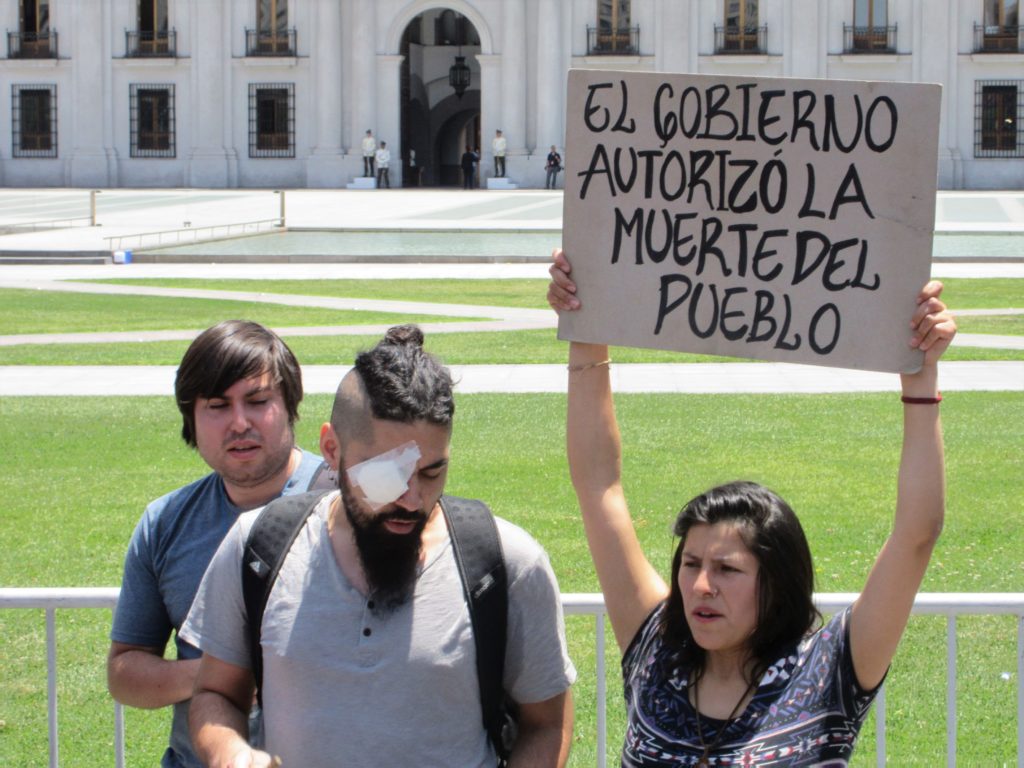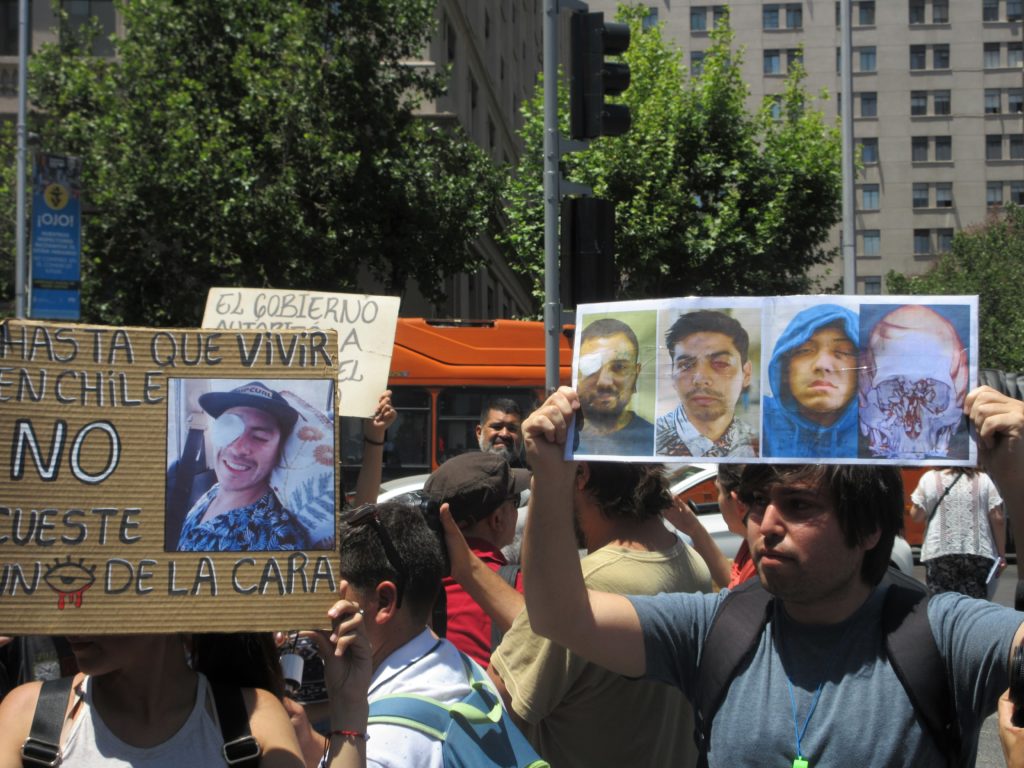grim prognosis
"I felt an impact in my eye, and it all went black. I held up my hands so they would stop shooting and then laid on the ground, and they shot me three more times."
"I thought, they are going to kill me."
"They were taunting me, saying that I will lose my sight."
Brandon Gonzales, 19, hospital intern, Santiago Chile
"A tiny ball ['rubber' bullets] this size that hits with such force that the eyeball just opens up like a flower."
"Such damage is very difficult to repair at all."
Dr.Carmen Torres, ophthalmologist, Eye Trauma Unit, Salvador Hospital
"It's a human rights catastrophe."
"If you compare the figures we see of eye injuries in France or in Kashmir or in Palestine, those numbers are much lower [wounded demonstrators]."
Dr.Enrique Morales, president, Human Rights Department, Medical College of Chile
 |
| Marcelo Herrera, 32, was hit in the right eye by a projectile fired by police at a protest in Santiago. Photo: Sandra Cuffe. |
Those 'rubber bullets' police in Chile are meeting demonstrators with, are not quite as innocent of human destructive force as that innocuous description of 'rubber' would have the world believe. These are quite special 'rubber bullets', 80 percent of each pellet comprised of much denser materials that include lead, according to researchers at the University of Chile. That content of dense materials such as lead increases the velocity of each projectile, making them penetratingly hard.
Severe eye injuries, most caused from those hardened rubber bullets, along with tear gas canisters fired by Chile's security forces have been the cause of eye trauma for 285 demonstrators, possibly more. There are so many people presenting with bandaged eyes it has become symbolic of protest rallies. And despite the seriousness of the injuries, protesters have not been deterred by the very real threat of losing an eye or losing sight entirely; their outrage with their government propels them on.
President Sebastian Pinera ordered the militarized police to patrol the streets after metro stations in Santiago were burned by upset protesters over an increase in subway fares. Since that authorization police have been held responsible for six fatalities, for over 6,300 arrests, and for 2,400 people being hospitalized, leaving prosecutors in the country to investigate hundreds of cases of abuses alleged to have been perpetrated by police, including torture and sexual violence.
/arc-anglerfish-tgam-prod-tgam.s3.amazonaws.com/public/LZ62KTOE7JFQ7GWQQJ44JKPJNU.jpg) |
. More than 230
anti-government protesters have suffered an eye injury.
The Associated Press
|
Chile would suspend the use of nonlethal pellets for crowd control, permitting police to fire them in circumstances of "extreme danger" only -- the same standard applied for live rounds -- according to Mario Rozas, director general of the Chilean police force.
When Mr. Gonzalez had been shot, he described later an officer loading him into a police van, medical attention withheld until many hours had passed when he was taken to a public hospital. He had brought with him from the hospital where he was employed, bandages and gauze intending to treat injured protesters, before he became himself a victim. Dr. Torres, after operating on Mr. Gonzalez said the young man would retain his eye but as a result of nerve damage, he would lose all but five percent of his vision.
A grim personal prognosis for the young man, and grim as well for the country whose population will not soon forget the violence visited upon them by their own government, one that appears to be by its actions and oblivious response to peoples' grievances, a human-rights-abusing successor to the detested Pinochet government.
 |
| Members of a newly formed collective of eye injury victims and relatives protest outside the presidential palace in Santiago. Photo: Sandra Cuffe. |
0 Comments:
Post a Comment
<< Home